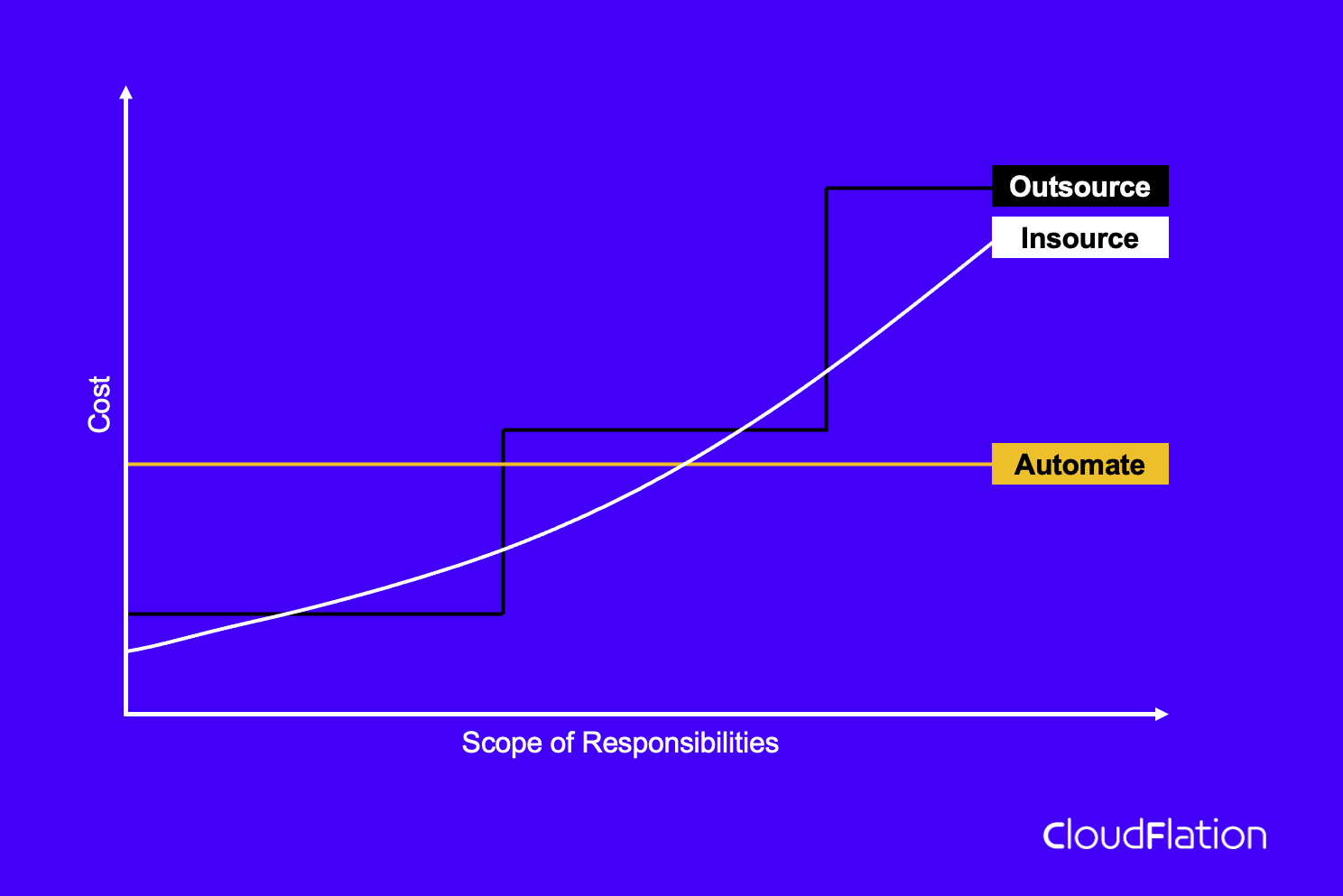As businesses continue to evolve, IT leaders must adapt to growing responsibilities and demands. In a recent poll I ran on LinkedIn, 75% of respondents chose automation as the preferred approach to augmenting IT capabilities, compared to insourcing and outsourcing. In this blog post, I will summarize the pros and cons of these three strategies based on the various feedback and experiences and demonstrate why automation has become the way to go for many organizations.
Insourcing: Scaling with Growing Responsibilities
Pros:
- Greater control over processes and resources
- Enhanced collaboration and communication within the team
- Easier knowledge transfer and skill development
Cons:
- Costs increase proportionately with the growth of responsibilities
- Limited access to specialized skills or external expertise
- Can lead to overburdened staff and increased turnover
Outsourcing: The Hidden Costs of Variable Orders
Pros:
- Access to specialized expertise and services
- Reduced overhead and operational costs
- Faster implementation of projects and initiatives
Cons:
- Occasional jumps in costs due to variation orders when responsibilities grow
- Potential communication and collaboration challenges
- Risk of dependence on external providers and loss of control over critical processes
Automation: An Investment for Long-Term Stability
Pros:
- Initial investment may seem high, but costs remain steady regardless of responsibility growth
- Enhanced efficiency and reduced errors in processes
- Enables IT teams to focus on strategic, value-adding tasks
Cons:
- Initial implementation may be time-consuming and resource-intensive
- Ongoing maintenance and updates to automated systems
- Potential job displacement and workforce resistance
Automation has become the favored choice for augmenting IT capabilities. While insourcing and outsourcing offer certain benefits, they also come with increased costs as responsibilities grow. On the other hand, automation may require an initial investment but offers long-term stability and efficiency gains. As IT departments continue to face new challenges, it’s essential to evaluate these strategies carefully and choose the best course of action for your organization’s unique needs.

